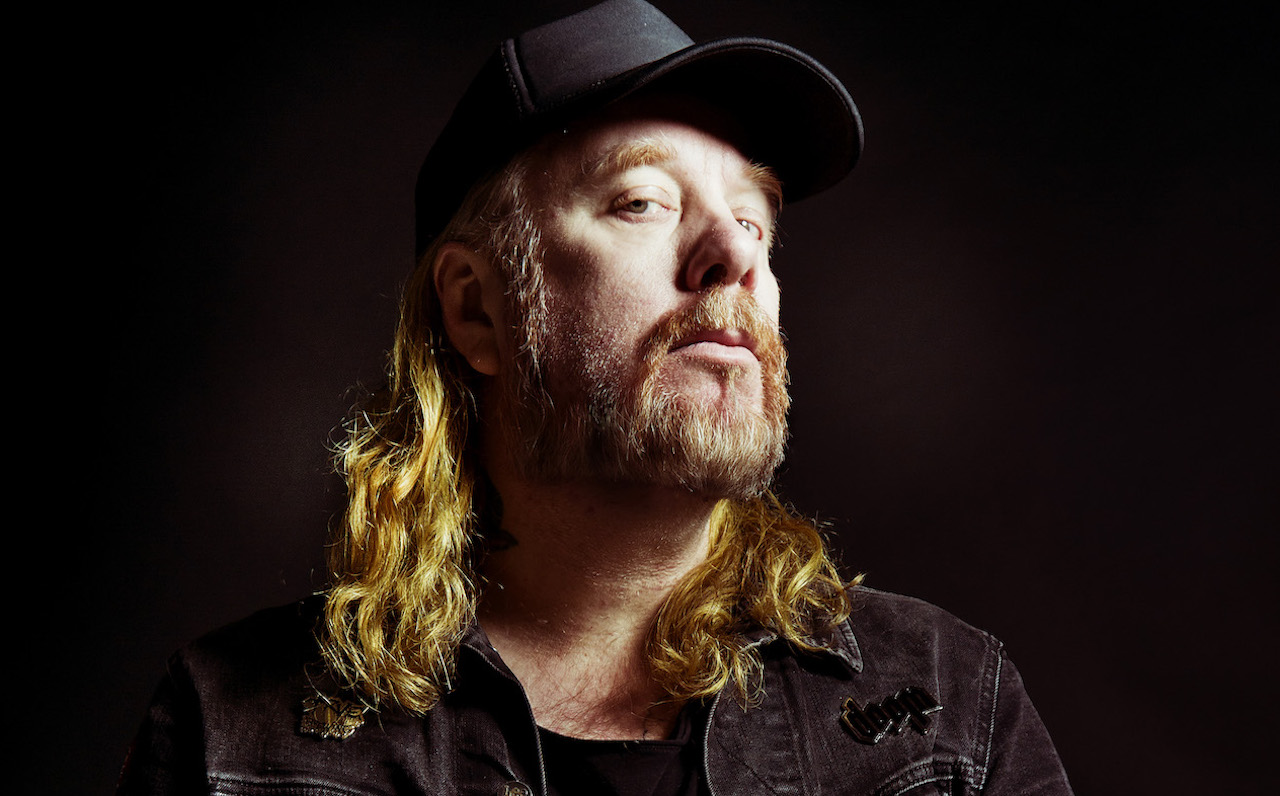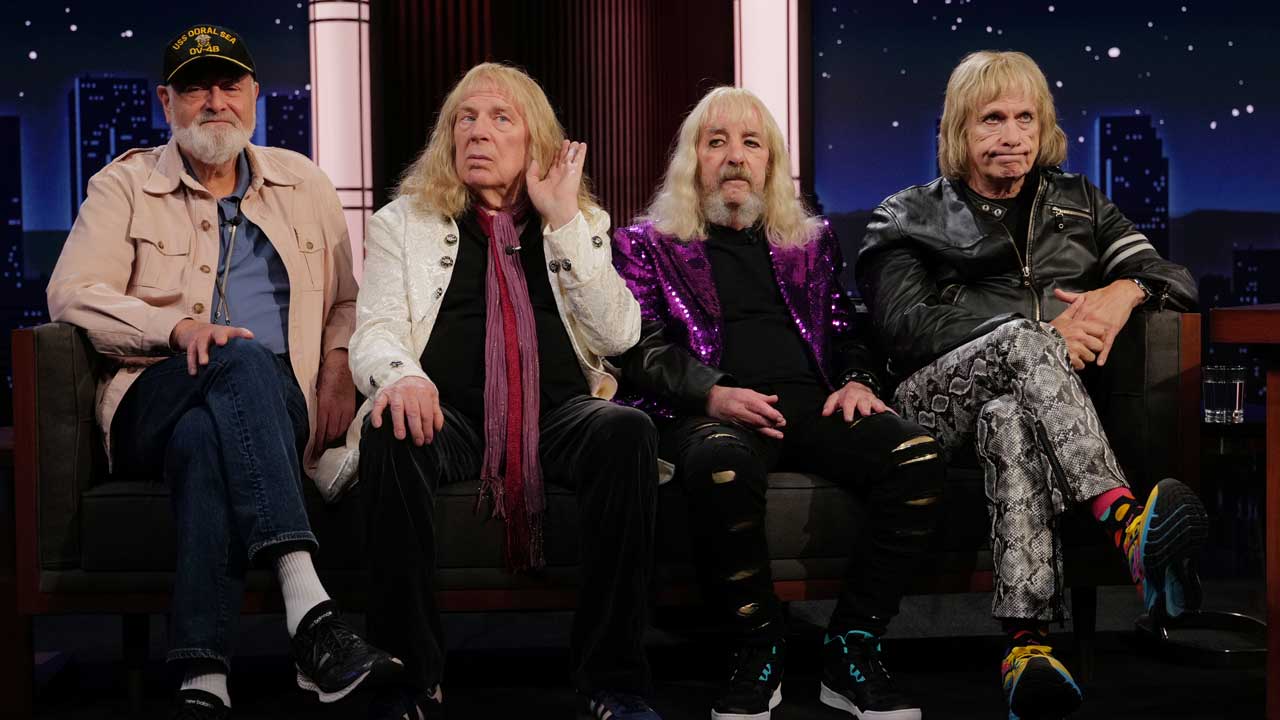At The Gates' Tomas Lindberg: 10 albums that changed my life
From Bathory to King Crimson, these are the records that shaped Tomas Lindberg of At The Gates

From Gothenburg to grindcore, Tomas Lindberg has spent over three decades at the forefront of extreme metal’s development, fronting legendary melodeath trend-setters At The Gates while pulling in temp spots with the likes of The Crown, Lock Up and Nightrage. With At The Gate’s seventh record The Nightmare Of Being pushing the legendary Gothenburg group into proggier territory than ever before, we spoke to Tomas to find out what records expanded his horizons as a musician…

Bathory – Bathory (1984)
“Bathory played a huge part in metal’s history; here in Sweden they were the band that opened the gates. Without them I don’t think Sweden would have a death metal scene. For most other people around the world they were a little too obscure – they never played live, never had real band photos other than weird images of Quorthon spitting fire or whatever. I loved that mystique though and musically the record is so simple, building on what Venom did while just adding more.
"Seeing any kind of metal band in Sweden back then made it feel like we could do it – whether that was Candlemass, Bathory or bands in the more obscure subgenres of metal, we had all kinds of ground-breaking bands coming out. Seeing bands like Candlemass in particular live was huge – these weren’t huge American artists out on a global tour, these were Swedes just like us.”
Death – Scream Bloody Gore (1987)
“Scream Bloody Gore was so important for a variety of reasons, but for us involved in the tape trading underground in the late 80s it was the first record that came out by one of ‘our’ bands, one we’d been following from demos. It was a big thing to hear those songs with clear production and just seeing those vinyl records made everything feel more real.
"Scream Bloody Gore was – and still is – the blueprint for death metal to a larger extent. I like how they evolved over time – when At The Gates were starting out around 1990, they had put out Spiritual Healing and were working towards the Human record; in our own early records you can hear a lot of those influences right in there. Death showed you could always do more, even with a solid base of death metal you were able to explore other arenas.”
Discharge – Why? (1981)
“Here in Sweden, death metal and punk were always knit together – we’d go to each other’s shows and play with each other’s bands, especially in the early days. We were all just after whatever was extreme, basically! It never hurt that a lot of the early thrash metal bands would wear t-shirts of Discharge or GBH either; it made us want to go seek those records out. Even listening to a band like Voivod, their influence can be felt!
"I got into Discharge with that Why? 7” and followed them for a while. The whole impact of that band is condensed into that one iconic beat, it’s streamlined and made to perfection in a way we’d not seen before. Even with bands like GBH, they weren’t at the same level. It’s almost this uniform thing and that record is the perfect summation of what to listen to if you’re looking for crusty hardcore.”
Sign up below to get the latest from Metal Hammer, plus exclusive special offers, direct to your inbox!
Judas Priest – Sin After Sin (1977)
“I’m more of a Priest guy than an Iron Maiden guy and to me, the three records Priest put out around that late 70s period – Sad Wings Of Destiny, Sin After Sin and Stained Class – are always my go-to. I do like the more ‘metal’ Priest, but the albums that are a bit more proggy are the ones I really love, especially the guitar work.
"I think it’s natural with signing to a major label that they’ll often want more straightforward songs – which Priest do brilliantly, just look at Screaming For Vengeance – but Sin After Sin is still the one I’d pick to show my metal ‘cred’ if someone asked me which album I loved, ha ha. The music itself is incredibly well played, but also puts out a lot of emotion and Rob Halford is a god singing. You can never fault Judas Priest!”
Voivod – Killing Technology (1987)
“Killing Technology was the album that changed the template for me on how songs were supposed to be written and sound. With Voivod there’s a lot of progressive stuff on that record that shouldn’t really make sense to a 15-year-old, but to me it was like a lightbulb went off and someone said, ‘You can play music like this too.’ That’s always been with me – Killing Technology proved it was okay to be progressive within death metal. They’re also one of the few bands I got a tattoo of, as they’re one of my favourite bands. I got one of their old school skulls on my ankle.
"Our new album The Nightmare Of Being is the first time I’ve felt we can incorporate those progressive elements naturally; it was all about finding ways to do so while maintaining the core ATG sound. I never want to just play it safe as a musician.”
King Crimson – Red (1974)
“Considering the kind of music I make, I suppose it’s not a surprise that most of the records on this list are on the heavier side. But with the new album sounding as it does, it would be weird not acknowledging at least one prog album! We love Magma and bands like that, but King Crimson were the one unifying factor between all At The Gates members. Even back in the early 90s, we’d listen to them a lot.
"Red might be one of the easiest gateways into progressive music for metalheads – it is heavy and has a lot of riffing and heavy bass sounds… it’s a natural way into that prog universe. It was definitely the first prog album that got to me – after that I went and sought out all their other records and bands that were like them. I just wanted to find anything which could hold my attention.”
Mercyful Fate – Melissa (1983)
“I’m just going to say it: Melissa by Mercyful Fate might be the best metal record ever written. Every time I say that, someone’ll say, ‘What about this album?’ All I can say is, there are a lot of albums out there equally good, but not necessarily better! The playing doesn’t even necessarily feel metal – it’s almost closer to occult rock.
"King Diamond has a lot of soul on that record – I think as time passed he learned to control his voice more and more, but I like it in the early days when it was raw and there was a blues or soul feel. I know that record from start to finish – it was one of the cornerstones of my metal education. I was too young to see Mercyful Fate live, but I saw King Diamond on the Abigail tour, and hope I’ll get to see them someday.”
Metallica – Master Of Puppets (1986)
“You can’t find any faults on Master Of Puppets. It’s one of the records At The Gates will go back to sometimes, especially when it comes to checking how we are getting on. It’s a fully realised album in every way; the sequencing of the songs, the dynamics… that’s the kind of stuff we’ll look at ourselves: ‘Does our record build like Master Of Puppets builds?’ For me, it’s the best Metallica record and a classic in its own right.
"We were 14 when that record came out and it was perfect timing so far as we were concerned! We all had these C60 cassettes, because the album was too long to fit onto one side of the usual C90 versions. Everybody had their own cassette, so we’d just be walking around with ghetto blasters listening to Master Of Puppets. It probably was the birth of Gothenburg’s metal scene, ha ha!”
Possessed – Seven Churches
“I talked about Scream Bloody Gore being the first ‘underground’ death metal album, but Seven Churches is probably the first official death metal album, particularly thanks to the song Death Metal.
"For me personally, Jeff Becerra is one of the vocalists who had the biggest influence on me. When I started diving into heavier and heavier music, screaming along to records in my bedroom, I just loved the rawness of death metal vocalists. But what Jeff had was different – he articulated every word. He had this guttural feel like a roar from hell, but most crucially you could actually hear the lyrics. It sounds a bit old man but that’s what I want when I listen to death metal vocals. On our new record, we worked with a lot of different pitches and I had to really work to get there and find that right pitch for each song.”
Slayer – Haunting The Chapel (1984)
“Haunting The Chapel is still my favourite Slayer release and period. I love the way the Show No Mercy-era had this classic metal feel but played in a faster, punkier way. On Show No Mercy you can hear a lot of Judas Priest in the playing, it’s just that Slayer are more pummelling. Then you get Hell Awaits which gets very intricate – almost like a death metal record with its riffs. Haunting The Chapel mixes both of those approaches, taking that classic metal feel while giving it a real nasty makeover.
"Haunting The Chapel is a perfect show of what I want Slayer to be, in this perfect three-song package. Slayer were one of those bands that grabbed you instantly with their cover art. We’d go into record stores specifically looking for the best art, then I’d buy one, and get my friends to buy another so we could tape-trade later.”
At The Gates new album The Nightmare Of Being is out now via Century Media
Staff writer for Metal Hammer, Rich has never met a feature he didn't fancy, which is just as well when it comes to covering everything rock, punk and metal for both print and online, be it legendary events like Rock In Rio or Clash Of The Titans or seeking out exciting new bands like Nine Treasures, Jinjer and Sleep Token.

